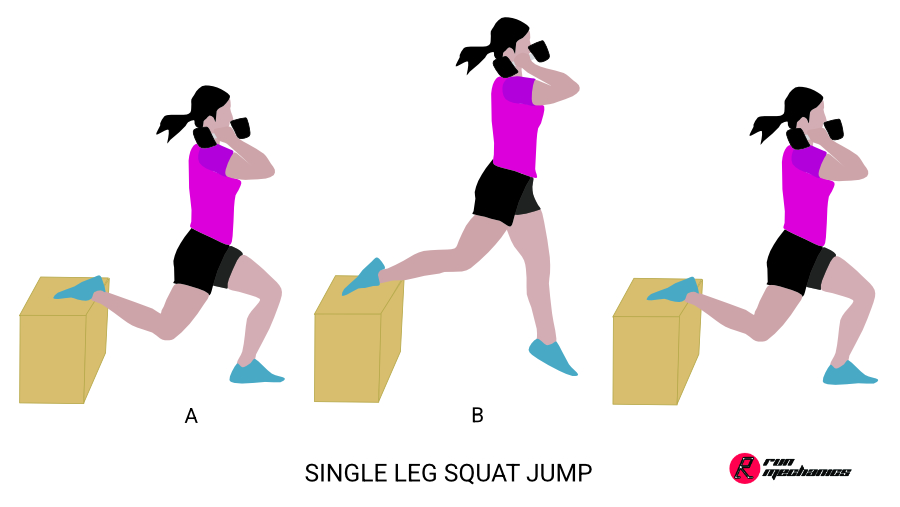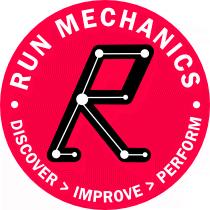At RunMechanics, shock at impact is one of the most frequently occurring imbalances that we see. Shock at impact can go up to 2-5 times the bodyweight depending on the runner’s technique and the ability to engage the core. Plyometrics drills, especially Single-leg squat Jump is an excellent workout to improve the ability of a runner to improve the ability to reduce the shock.
It is also quite common for runners to have imbalances between the left and right sides of the body. These imbalances can put undue stress on one side of the body leading to inefficient stride and can lead to injury. Observing the running dynamics such as shock between left and right is a good way to understand the severity of such imbalances. Since Single-Leg Squat Jump is a unilateral workout and is performed on one side at a time, it is a very effective way to reduce imbalances.
How to do it?
This workout requires a bench that is knee height or more. You can optionally consider using dumbbells for this workout.
- Start in a split squat position with one leg placed on the bench, while the other is firmly placed on the ground (see picture A). Keep the legs are shoulder-width apart for better balance.
- Ensure that the leg in the front is placed such that it covers enough distance for you to go into a deep lunge position (hip goes down as you bend the knee) (see picture A)
- Optionally, you can hold dumbbells in each hand to increase the difficulty level.
- Once you are in this position, powerfully extend the hip, knee, and ankle of the forward leg to initiate the jump. Please note that hip extension is the key here.
- Ensure that you control the jump and land down softly by bending at the hip and knee.
- Repeat the jump on both sides of the body.
- Ensure the back is extended and straight, and the head is in a neutral position through the workout.
When to do it?
You can include this as part of your strength training to help with better extension, better balance, and improve your ability to control the shock. 3 sets of 10-15 repetitions on each side of the body is a good start point.

